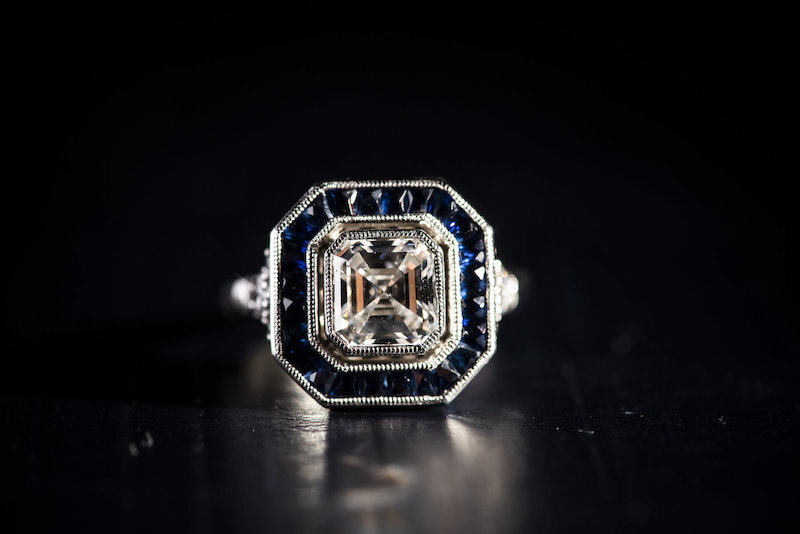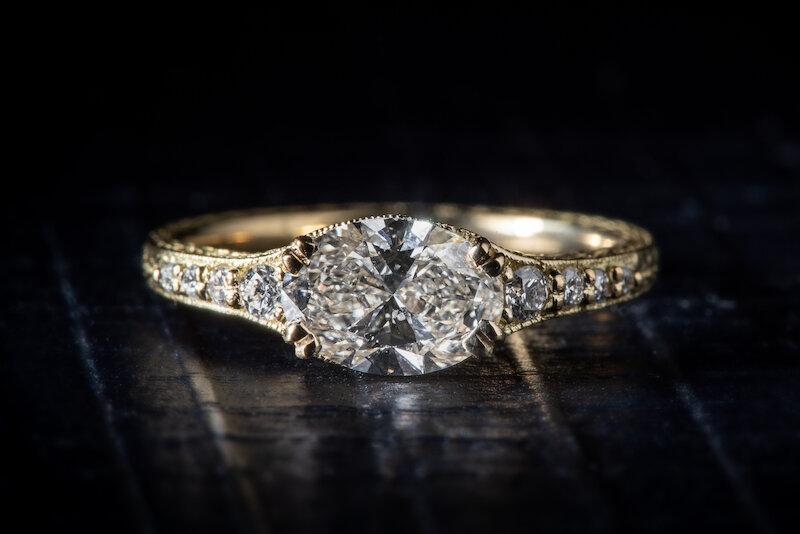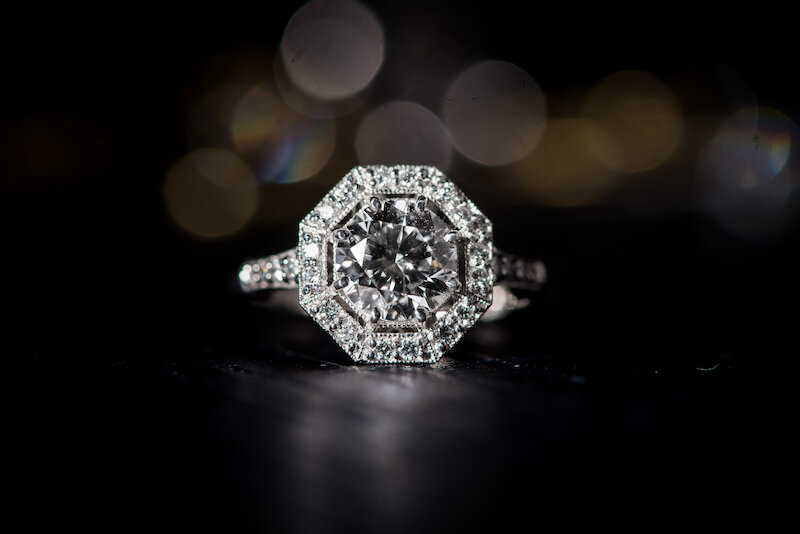Tim's Top Three Tips for Buying a Diamond
The New Year is, of course, a time for new beginnings. One way we see this manifesting at our studio is that we inevitably see an upswing in engagement consultations at this time. In looking at our calendar over the next few weeks I am already seeing this effect, so this is an exciting time of year for us. In honor of this, I decided to re-run a popular post by Tim from a few years ago on his Top Three Tips for Buying a Diamond. If you or someone you know is in the market for a diamond, this is a great baby-steps primer on starting the process and gaining confidence in your search. If you are ready to move forward with your search, set up an appointment with us today and we'll help you dive even deeper into this meaningful purchase.
Tim's Top Three Tips for Buying a Diamond
 1. Trust your own eye This may be contradictory for a list where I'm giving you expert advice, but my number one rule when buying diamonds is: don't put too much weight in "expert" opinions or in diamond grading certificates. I think that the guidance of a salesperson or the grade on a certificate are better appreciated as tools for you to use when picking out a diamond rather than as The Authority on what to buy. This is especially true when searching online since all you, as the consumer, have to go off of is the certificate. When I have clients come to me looking for very specific graded qualities, I always take some time to walk them through what these grades mean and how they can vary considerably between different grading authorities. It's true that some grading houses are more scrupulous than others, and I have also noticed that even within a single grading house you can see a huge variation in standards depending on factors such as where exactly that diamond was graded. For example, GIA has grading houses in Mumbai, New York, Bangkok, Johannesburg, Tokyo, Carlsbad, Ramat Gan, and Surat. Each of these houses has its own reputation for adhering to strict grading standards, so you can't necessarily trust that a "GIA certified diamond" will look exactly how you expect. Diamonds that look identical on paper may look noticeably different to your own eye - and even to the salesperson who is showing you the diamond. Always remember that you are buying the diamond, so you should be shown and walk away with a stone that hits the marks for you - not for the salesperson who insists you need a certain color grade or size.
1. Trust your own eye This may be contradictory for a list where I'm giving you expert advice, but my number one rule when buying diamonds is: don't put too much weight in "expert" opinions or in diamond grading certificates. I think that the guidance of a salesperson or the grade on a certificate are better appreciated as tools for you to use when picking out a diamond rather than as The Authority on what to buy. This is especially true when searching online since all you, as the consumer, have to go off of is the certificate. When I have clients come to me looking for very specific graded qualities, I always take some time to walk them through what these grades mean and how they can vary considerably between different grading authorities. It's true that some grading houses are more scrupulous than others, and I have also noticed that even within a single grading house you can see a huge variation in standards depending on factors such as where exactly that diamond was graded. For example, GIA has grading houses in Mumbai, New York, Bangkok, Johannesburg, Tokyo, Carlsbad, Ramat Gan, and Surat. Each of these houses has its own reputation for adhering to strict grading standards, so you can't necessarily trust that a "GIA certified diamond" will look exactly how you expect. Diamonds that look identical on paper may look noticeably different to your own eye - and even to the salesperson who is showing you the diamond. Always remember that you are buying the diamond, so you should be shown and walk away with a stone that hits the marks for you - not for the salesperson who insists you need a certain color grade or size.
 "Custom" - Bespoke platinum, diamond, and sapphire engagement ring designed by Alx&Co., featuring a custom-sourced Asscher cut diamond.
"Custom" - Bespoke platinum, diamond, and sapphire engagement ring designed by Alx&Co., featuring a custom-sourced Asscher cut diamond.
2. Be confident in your budgetThere are, of course, times when I meet with a client and find that their expectations and budget don't align. For example, you won't find a 2-carat diamond on a $1k budget. Aside from this consideration, I always encourage our customers to stick with their own comfort level and ignore the noise coming from other salespeople (or nosey family members) about what they "need" to spend on their diamond. I like to work backward from a client's comfort point to educate them on what they can buy at that budget and what type of value they get from their diamond in this range. By working through what they want most out of their diamond - is it a big "look?" A beautiful colorless hue? - we can determine which other factors can be compromised on in order to meet their budget.
 "Emma" - 18k yellow gold Alx&Co. design featuring a custom-sourced oval diamond and diamond accents, price upon request.
"Emma" - 18k yellow gold Alx&Co. design featuring a custom-sourced oval diamond and diamond accents, price upon request.
3. Ask questionsThe old adage of "there is no such thing as a stupid question" is very true here. The fact is, unless you work in the industry, you probably know very little about diamonds and what to look for in them. To make matters more difficult, so much of the industry is swept up in marketing, so it can be very difficult to educate yourself about this purchase from an objective perspective. So, I always encourage our clients to ask tons of questions no matter how trivial or obvious they may seem. This is not only a big financial decision, but it's also a presumably permanent one. Of course you can re-do your engagement ring down the road, but the goal is usually to avoid that, so it's important to try and get it right the first time around.This is also why I always expect to go through at least a couple of consultations with a client before they make a purchase. The first consultation is usually a little overwhelming in the amount of information we go over. More often than not, clients say that there is so much more to understanding a diamond than what they appreciated before coming in. I think that's great because I want our clients to feel educated about their purchase. Usually, by the second meeting my clients come prepared with a few questions based off of our first appointment and feel more comfortable jumping in with their thoughts as we go through our review. By the time my client makes his or her decision on the diamond they want to buy, they feel 100 percent knowledgeable and confident in their choice, which is the best feeling for me as the guy who helped them get there.
 "Ruth" - Platinum Alx&Co. design featuring a custom-sourced round diamond and diamond and diamond accents, price upon request.
"Ruth" - Platinum Alx&Co. design featuring a custom-sourced round diamond and diamond and diamond accents, price upon request.
If you're interested in buying a diamond or know someone who could use some help, reach out to us to schedule a consultation. We firmly believe that this should not be a stressful process and we're happy to share our knowledge with you so that you feel confident in your choice. Check us out and see how we're different from other jewelers.

